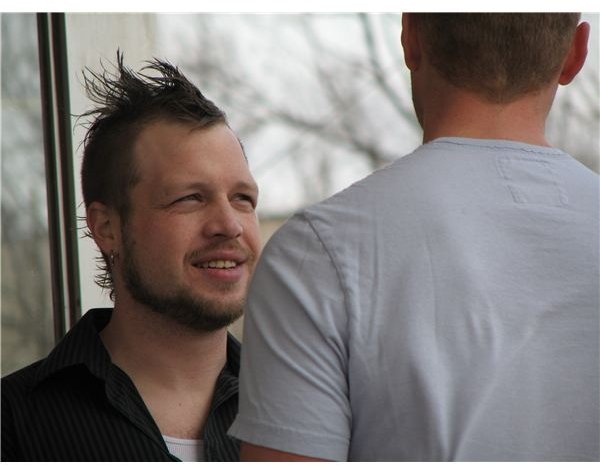Using the 180-Degree Rule When Filming: Sightlines, Camera Angles and More
One simple principle when shooting subjects is considering ‘the line’, known as the 180-degree rule. For some filmmakers and/or videographers this may come naturally, but this is one major principle, no matter your degree of experience or knowledge, that every camera operator needs to always consider; otherwise his or her work will appear amateurish.
The 180-degree rule is an imaginary line or the axis of action drawn across the frame or screen. It is the location where not only action or the direction a subject is moving, but it is also the sightlines, or the character’s direction of vision. Once shooting has begun, the camera operator needs to stay on one side of the line in which they initially started shooting that particular action. There is one way to break this rule and we’ll discuss this later.
What are Sightlines?
Consider two characters speaking to one another while facing each other. Their direction of vision is the sightline. For instance, Character A is on the left side of the frame speaking to Character B on the right side of the frame. Character A and Character B, because of the sightline, have created an imaginary 180-degree line, straight through them. Therefore, the camera operator is on Character A’s right side and Character B’s left side. To create a logical and believable plane of action, the camera operator must stay anywhere on this side. Suppose the camera operator did not consider the 180-degree rule, and all of a sudden, Character A is on the right side of the frame. This particular shot will give viewers the impression that Character A is talking to themself. The result is not only distracting but it can become confusing to your viewers.
Principles While Shooting the Action
When a subject moves across the frame, such as a truck moving from the left side of the frame to the right side of the frame, viewers are seeing the truck’s right side. The camera must stay on this side of the line. If the camera operator crosses the line while shooting the truck’s left side, the truck would appear as though it was moving in the opposite direction all of a sudden.
If the camera operator is shooting a shot in which the truck is moving toward or away from the camera, he is shooting on the line, this is not breaking the 180-degree rule. Therefore, shooting on the line is still considered a logical flow of action; however this shot may be distracting if not aesthetically placed accordingly when editing the all shots together.
Breaking the Rules
Now, how do you break the 180-degree rule? Simple! You move the camera, while shooting, across the line. For example, if a Steadicam operator tracks around a subject, he creates a continuous flow of action, therefore he has not broken the 180-degree rule. The operator may stop anywhere, but once stopped, a new line exists.
The main thing you must consider, whether planning your shots while storyboarding or while blocking the set, is to consider the 180-degree rule. It’s simple to follow and once the line is followed, you automatically create a continuous flow of action and a logical sense of direction within your video.
References
Film Art: An Introduction (Fourth Edition). Bordwell, David and Thompson, Kritsin.
Images used are property of the author.
